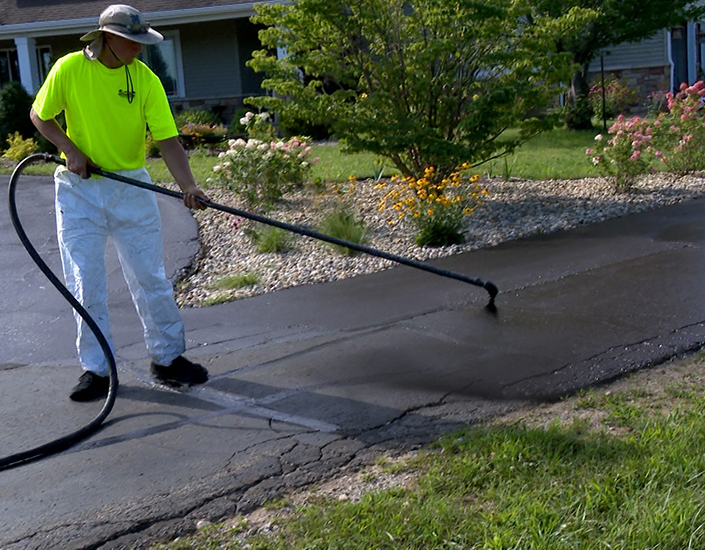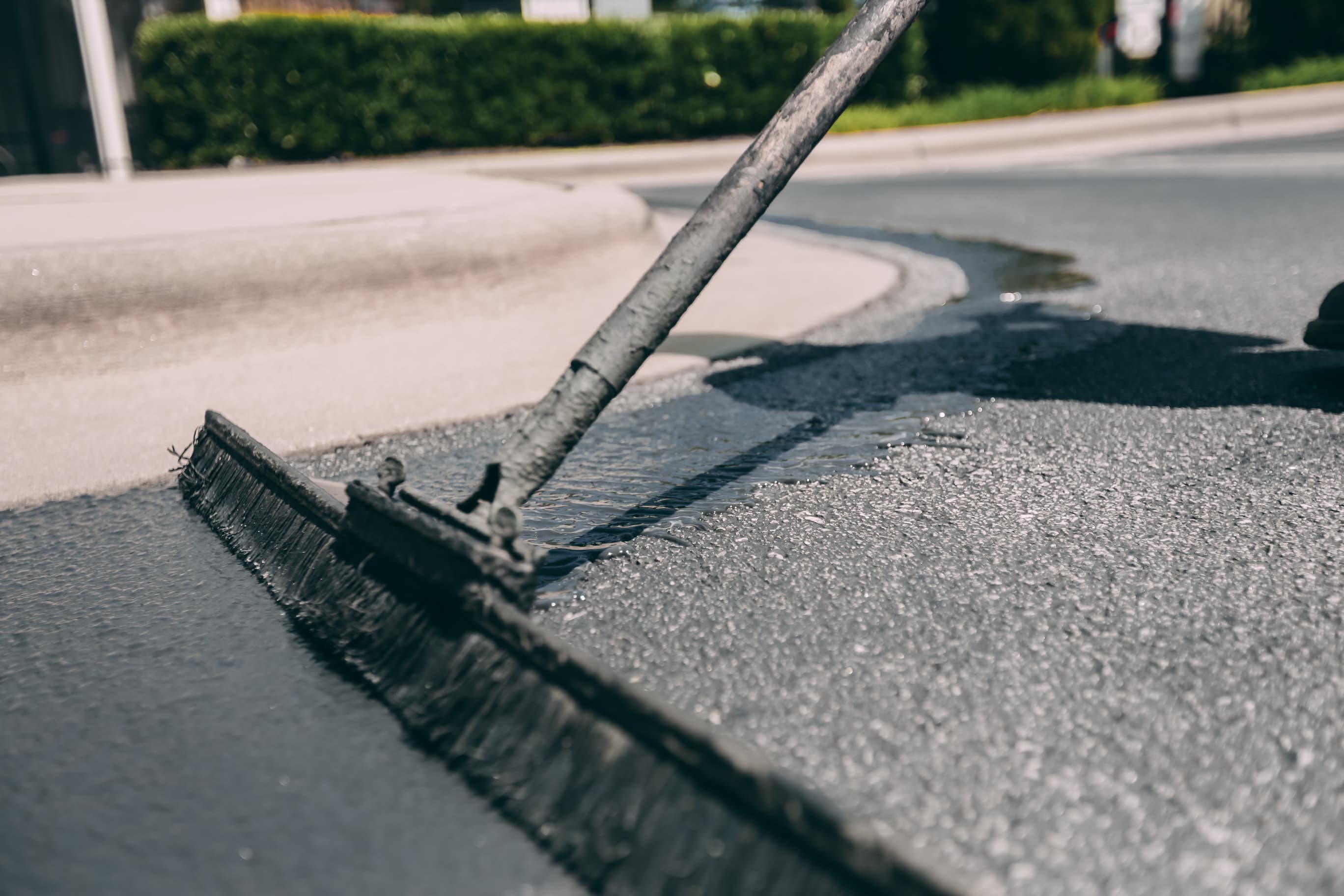Maximize Financial Investment Returns: Angled Parking Area Excellence with Asphalt Sealing
Maximize Financial Investment Returns: Angled Parking Area Excellence with Asphalt Sealing
Blog Article

The Ultimate Overview to Putting Up Hot Mix Asphalt
Warm Mix Asphalt setup is an accurate process that demands focus to information and adherence to specific guidelines to accomplish optimal outcomes. From first site preparation to the last touches, each step plays a crucial duty in ensuring the longevity and performance of the asphalt pavement. Comprehending the ins and outs of Warm Mix Asphalt installation can cause affordable solutions and long-lasting infrastructure. Join us as we navigate via the crucial actions and upkeep techniques that add to a successful asphalt task.

Comprehending Hot Mix Asphalt
Hot Mix Asphalt, frequently called asphalt concrete, is a functional product used in roadway building and construction and maintenance - commercial parking lot paving. It is made by integrating mineral aggregate like sand, gravel, or crushed stone with liquid asphalt, an oil item stemmed from crude oil. This blend is heated and then compacted to produce a resilient and long lasting surface area for roadways, car parking lots, and driveways
One key advantage of Hot Mix Asphalt is its capability to hold up against hefty lots and extreme climate condition. Its adaptability permits it to get and increase with transforming temperatures, minimizing the probability of splits and holes developing with time. Furthermore, Hot Mix Asphalt can be tailored to satisfy particular task needs, such as varying web traffic quantities or ecological considerations.
Appropriate installation and maintenance of Hot Mix Asphalt are vital to guarantee its durability and efficiency. This includes ideal site preparation, correct blending and compaction strategies, and regular repair work when needed. By recognizing the features and advantages of Warm Mix Asphalt, task supervisors and service providers can make educated decisions to accomplish effective road construction tasks.
Site Prep Work and Clearing Up
To make sure the successful installment of Warm Mix Asphalt, the initial step involves detailed site preparation and cleaning to create an appropriate structure for the sidewalk. Site prep work is critical as it sets the phase for a lasting and resilient asphalt surface. The initial task is getting rid of the site of any particles, vegetation, or existing sidewalk. This process may include excavation to eliminate improper products and ensure proper water drainage.
Adhering to clearing, the website must be correctly graded to develop the preferred slope and surface level for water drainage. Grading additionally assists in accomplishing the required density and harmony of the asphalt layer. Compaction of the subgrade is after that accomplished to enhance stability and stop clearing up in time. It is necessary to small the subgrade consistently to stay clear of irregular settling that could cause splits in the asphalt later.
Along with these steps, any utility changes or installations must be finished before continuing to the next stage of blending and using the asphalt. Correct website preparation is fundamental to the total high quality and longevity of the Hot Mix Asphalt pavement.
Mixing and Applying the Asphalt
Upon completion of website preparation and clearing, the following critical stage in setting up Warm Mix Asphalt entails the precise process of using the asphalt and blending blend. The blending of hot mix asphalt is normally performed at high temperature levels to ensure correct binding of the materials. The asphalt mixture is produced by blending hot asphalt binder with aggregate materials such as sand, gravel, or smashed stone. This procedure needs precision to attain the correct proportions and consistency for ideal performance.
When the asphalt combination is prepared, it is transported to the paving site utilizing vehicles especially made to keep the mixture hot. The application of warm mix asphalt is done making use of hefty equipment like pavers and compactors. The paver distributes the warm asphalt you could look here mix evenly across see this website the ready surface area, while the compactor after that compresses the mix to attain the desired density and smoothness.
Proper blending and application of warm mix asphalt are crucial for the durability and long life check out here of the paved surface area. Mindful focus to detail throughout this phase makes certain a high-grade final product that can withstand the rigors of website traffic and the components.
Compaction and Finishing Touches
After the hot mix asphalt has been uniformly dispersed by the paver, the following important step is to make sure appropriate compaction and use finishing touches to the smooth surface area. Compaction is necessary to achieve the wanted sturdiness and durability of the asphalt sidewalk. This procedure involves making use of a heavy roller to compress the asphalt mixture, getting rid of air spaces and ensuring a tight bond between the specific fragments. Appropriate compaction additionally aids in avoiding water infiltration and preserving the structural integrity of the pavement.
Ending up touches are the final steps taken to refine the surface of the asphalt. This might include attending to any type of abnormalities, smoothing out harsh locations, and making certain proper drain to stop water build-up. Depending on the project specifications, a final layer of sealer or leading finish may be used to improve the look and shield the asphalt from damage.
Focus to detail throughout compaction and completing touches is essential in accomplishing a high-quality asphalt pavement that will endure the test of time.
Upkeep Tips for Longevity
Implementing an aggressive upkeep plan is essential for guaranteeing the long-term sturdiness and efficiency of hot mix asphalt sidewalks. Normal assessments of the asphalt surface area must be conducted to determine any indications of wear, splitting, or pockets. Prompt repair services of these issues can protect against further damages and prolong the life-span of the sidewalk.
One essential aspect of upkeep is maintaining the surface area cost-free and tidy of debris. Routine sweeping and cleaning can stop the build-up of materials that can deteriorate the asphalt over time. Furthermore, proper drain should be kept to avoid water from merging on the surface area, as standing water can permeate right into the asphalt and create deterioration.
Sealcoating is one more essential upkeep task that need to be executed periodically. This protective layer helps to secure the asphalt from hazardous UV rays, water infiltration, and automotive fluids, prolonging its lifespan substantially. By complying with these upkeep pointers carefully, you can ensure that your warm mix asphalt sidewalk remains in leading condition for many years to find.
Verdict
To conclude, the process of setting up Warm Mix Asphalt is vital for producing durable and lasting road surface areas. Appropriate site prep work, accurate blending and application, compaction, and completing touches are essential actions in making certain the high quality and durability of the asphalt pavement. Regular maintenance, including evaluations, repair work, cleaning, and sealcoating, is crucial to preserving the honesty of the asphalt and optimizing its performance gradually.
Hot Mix Asphalt, typically recognized as asphalt concrete, is a versatile material utilized in roadway building and construction and upkeep.To guarantee the effective setup of Warm Mix Asphalt, the initial action entails extensive site preparation and cleaning to develop a suitable structure for the pavement (hot mix asphalt).Upon conclusion of site preparation and clearing, the next essential phase in setting up Hot Mix Asphalt includes the thorough process of blending and applying the asphalt combination. The mixing of warm mix asphalt is normally carried out at high temperature levels to ensure appropriate binding of the materials. The asphalt combination is created by blending hot asphalt binder with accumulated materials such as sand, crushed rock, or smashed stone
Report this page